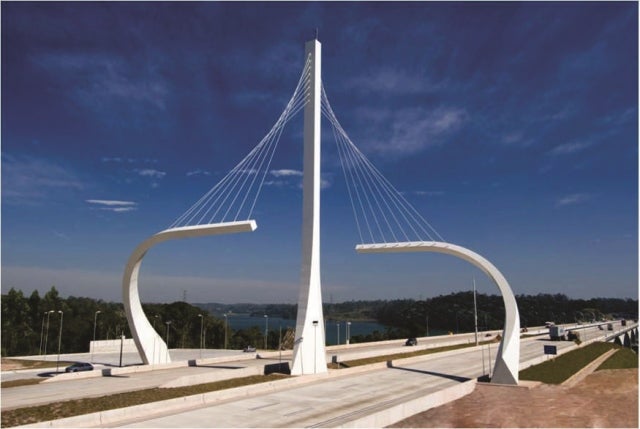By Graham Watkins, Environmental and Safeguards Lead Specialist
English | Español
A large proportion of my time at the IDB is spent working with project teams on infrastructure projects to enhance sustainability through minimizing potential impacts and risks for people and the environment. As human populations have continued to grow and become increasingly urban, the demand for infrastructure to provide energy, transport, and water services has increased. At the same time, there are more vocal demands for improved environmental conditions and avoiding negative consequences for people.
In this context, in December 2013, the IDB released its new Infrastructure Strategy titled “Sustainable Infrastructure for Competitiveness and Inclusive Growth.” This important document describes the IDB’s approach to supporting the efforts of Latin America and the Caribbean to address the growing demands for infrastructure and balance the need to meet people’s environmental needs. Energy, water, sanitation, and transportation infrastructure investments across the region will have to grow from US$150 billion to US$250 billion each year. These investments will reduce the costs of transport; improve living standards in urban areas; respond to natural disaster and climate change risks; and address water and food security challenges while maintaining environmental services.
Importantly this new Infrastructure Strategy includes as one of its six priority actions to “support the construction and maintenance of an environmentally and socially sustainable infrastructure.” The implementation of the strategy is accompanied by initiatives throughout the IDB to enhance sustainability including the work of the climate change and sustainability division, the biodiversity and ecosystem services program, the Emerging and Sustainable Cities Initiative, and approaches to enhancing sustainability in specific sectors such as transport. The private sector group of the IDB also evaluates and rewards sustainable infrastructure projects as well as recognizing and adding sustainability value to infrastructure projects.
Various approaches have been developed throughout the world to rate and establish standards for sustainability in infrastructure projects. These rating and standards systems are helping to create a framework for evaluating and improving the sustainability of infrastructure projects.
Amongst these approaches, the Civil Engineering Environmental Quality Assessment and Award Scheme (CEEQUAL) has been accepted in the United Kingdom as a standard against which to assess sustainability performance. Australia has established the Infrastructure Sustainability rating scheme. In the United States, the Zofnass Program for Sustainable Infrastructure at the Harvard University Graduate School of Design and the Institute for Sustainable Infrastructure have developed a tool – ENVISION – as a holistic framework to evaluate and rate sustainability in infrastructure projects. Also in the United States, the Federal Highway Administration has developed the Infrastructure Voluntary Evaluation Sustainability Tool (INVEST) as a basis for improving sustainability in infrastructure projects. Finally, based on a more process oriented perspective, the Nature Conservancy has worked with the World Bank Group to strengthen the application of the mitigation hierarchy in infrastructure projects.
All of these approaches respond to the need for infrastructure projects to demonstrate sustainability from social, environmental, resource management, project management, and climate and risk management perspectives. Furthermore, while there may not be agreement on the specific language for defining “sustainability,” there is a general concordance on what constitutes a sustainable infrastructure project.
Environmental and social safeguards play a key role in ensuring sustainability in infrastructure projects through supporting effective environmental and social evaluation, planning, and management. A major focus of my and my colleague’s work is to ensure the application of the mitigation hierarchy – avoid, minimize, restore, and compensate – focusing on avoiding and minimizing the negative impacts of projects. This work can lead to improvements in design and efficiency of projects and reduce inherent environmental and social risks, so increasing the overall value of projects.
In our experience, we have found that the early and effective participation of stakeholders in planning – either at regional and national scales or in projects through environmental and social impact assessment – is a critical determinant of the success or failure of a sustainable infrastructure project. That is, being able to identify and rate sustainability in a project and being able to effectively develop the project with stakeholders are equally important to achieving sustainable projects.
To further evaluate this premise, we, in the Environment and Safeguards Group are working with sector specialists from within the IDB, experts in sustainable infrastructure, and a consulting company DNV-GL to understand the enabling conditions that support the development and implementation of sustainable infrastructure projects. Part of this work will be to review existing sustainability rating schemes and to describe and learn lesson from sustainable infrastructure case studies in Latin America and the Caribbean. The ultimate purpose is to help provide guidance to clients to prepare increasingly sustainable and successful infrastructure projects. We feel that it is particularly important to recognize the critical role of stakeholder engagement and institutional capacities in developing and implementing successful sustainable infrastructure projects.
To this end, we are holding a round table discussion with international specialists in sustainable infrastructure and we would very much welcome your inputs and ideas. This event will take place at the IDB in Washington, DC, on March 19, 2014 from 10 AM in the morning. We hope to see you there.





Leave a Reply